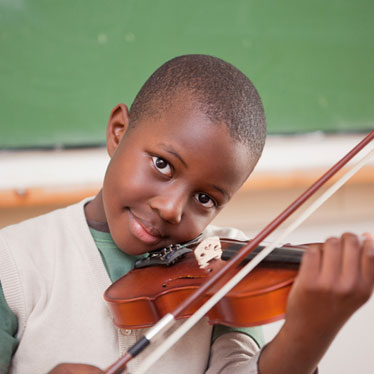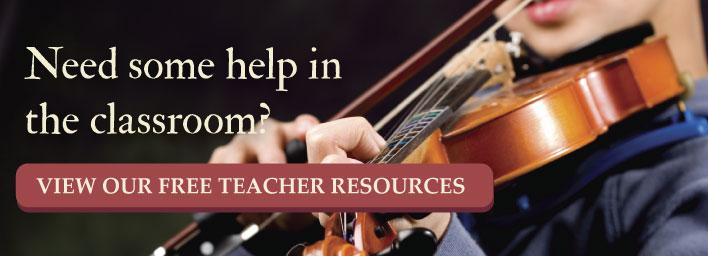Keeping Your Violin Students Interested

How often have you heard it? After a few years of violin instruction and such promising progress, the student decides to quit. Not only is it painful for the parents who have invested in the instrument and paid for the lessons (if they are private), it’s can be also be heartbreaking for the teacher who has invested his or her time and talents into showing the student how to progress with the violin.
Each year, hundreds of kids give up on this great personal skill for one reason or another. The reasons include things like:
- The student doesn’t know how to get better—perhaps they lack the proper materials (it may be time to upgrade their violin, but they don’t know it) or their instrument is in disrepair.
- The parents and student feels as if there isn’t enough musical talent—this is a misnomer. Anyone can play well with the right instruction and practice.
- Not playing during the summer—extended breaks from practicing and playing can cool the ardor for learning the violin.
- Not enough performance opportunities—to remain enthusiastic, kids need to demonstrate their progress. The way to do that is through public recitals and concerts.
- Boring music to practice—again, music lessons should be fun, and including the latest, most popular songs is a great way to keep your students interested.
However, knowing the reasons why students become unresponsive can help you arm yourself and your classes against a loss of interest. By creating an environment that is fun and interactive, students will stay dedicated to learning the violin. Plus, the continued music instruction will enhance their other scholastic performances.
In It for the Long Haul
To maintain your students’ interest, there are many techniques available. Although not every one of these suggestions will work for every scenario, you can pick and choose those that will work best for your specific situation.
- An Early Introduction: Providing an early introduction to music education, either with an instrument like the piano (which is easy for pre-school age children to use) or with a computer program designed to teach music basics, helps instill a love of music that will last a lifetime. Starting off early on an instrument like the piano gives children the opportunity to strike notes easily and learn basic musical notation before beginning an instrument like the violin. This initial training will make the transition much less of a challenge.
- Friendly Comradery: It’s wonderful if children can start music instruction with either a group of friends, or even just one or two. By making it a friendly activity, playing the violin together provides another source of interest within the friendship, and students will benefit from having a close peer engaged in the same activity. There are many examples of students who have started orchestra or lessons together, only to remain with it all through their grade school and high school years.
- Give Plenty of Opportunities for Display: To keep your violin students interested in practicing and improving their abilities, provide ample opportunities for them to demonstrate their skills. Schedule frequently concerts and recitals within the community. When students have a chance to be in the spotlight, it’s hard to resist their natural desire to show off their accomplishments. And of course, it will encourage them to practice more often.
- Provide Popular Music: It’s very difficult for students to get excited about learning a composition that was written 150 years ago for a bunch of bored aristocrats to listen to while watching fireworks. Although you can make classical arrangements more interesting by providing historical background, it’s a good idea to infuse an equal amount of popular rock and country tunes into your lessons and practice schedules. You can even allow your students to vote for their favorites and then purchase the violin sheet music through a local dealer or on Amazon.
- Avoid Overscheduling: Maintaining a steady pace is important, but the last thing you want to do is overload your students. This can produce burnout that is hard to contradict. Keep an even keel by allowing breaks when needed, focusing on slowing down the progress if things get too frenetic, and making sure that your practice schedule still allows time for other free-time activities and scholastic studies.
You can keep your best violin students interested in continuing their instruction by making your lessons the highlight of their day or their week. By employing these types of techniques, you can ensure that your students embrace music instruction for a lifetime.


